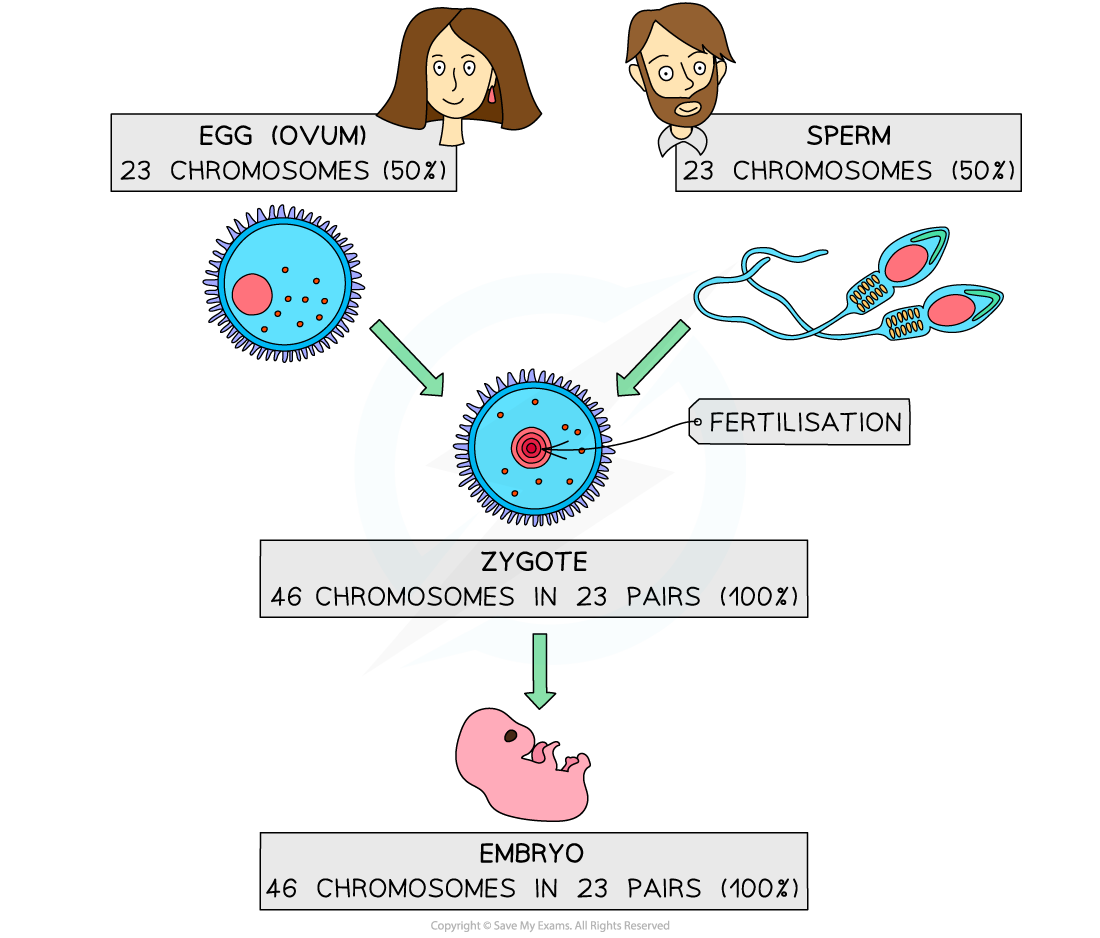Mammalian Gametes
Gametes
- Gametes are the sex cells of an organism
- For example, the sperm and egg (ovum) cells in humans
- Gametes fuse during fertilisation to form a zygote
- Fertilisation is the fusion of the nuclei from a male gamete (sperm cell) and a female gamete (egg cell)
- These sex cells are formed during meiosis and only have one copy of each chromosome, so they are haploid cells
- For humans, that means the sperm and egg cells contain 23 single chromosomes in their nucleus

Sexual reproduction involves the fusing of two gametes to form a zygote that contains DNA from both parents
Mammalian gametes are specialised for their functions
- Mammalian gametes have adaptations to increase the chances of fertilisation and successful development of an embryo
- Sperm cells:
- Have a flagellum (tail) that allows them to swim towards the egg cell
- Contain many mitochondria that provide energy for movement of the flagellum (swimming)
- An acrosome that contains digestive enzymes to break down the protective glycoprotein layer (a jelly-like coating known as the zona pellucida) surrounding the egg cell - sperm cells must penetrate this layer in order to fertilise the egg
- Egg cells:
- Are much larger than sperm cells as most of their internal space contains food to nourish a growing embryo
- Have follicle cells that form a protective coating
- Have a jelly-like glycoprotein layer, known as the zona pellucida, that forms an impenetrable barrier after fertilisation by a sperm cell has occurred, to prevent other sperm nuclei from entering the egg
- These features are summarised in the diagrams and tables below

Structure of a mammalian sperm cell

Structure of a mammalian egg cell
Adaptations of Mammalian Gametes Table


